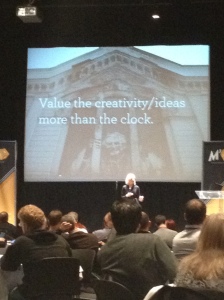I can still hear the panicked conversation from down hall “I came in this morning and the plan we worked on all day yesterday is gone.” There were other words but I would like to keep this business friendly. We have all probably had something like this happen. Early in my career as a consultant I got some great advice, “always have a backup”. Unfortunately you tend to get that kind of great advice right after something really bad happens. If you have not experienced the cleaned blackboard or presentation file that won’t open yet take this advice to heart.
Having a backup does not have to be a big deal. Keep a copy of your presentation on paper or thumb drive. If you have spent the day noodling on a black or white board use your cell phone to take a picture or go old school and copy everything down. I have always wondered if the cure for cancer has been made only to be erased overnight when someone misses the “please keep” sign.





